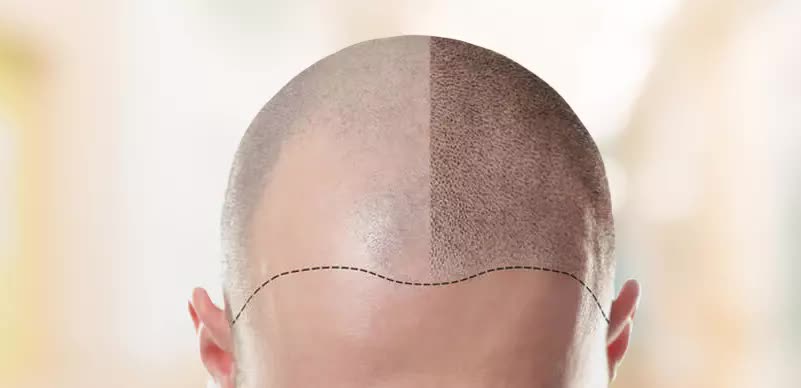
Hair Transplantation
Hair loss, though a very common occurrence, has the potential to grow into an emotionally devastating experience for both men and women as it progresses, leading to balding, often resulting in a negative body image, low self-esteem and even depression. It is important for us to acknowledge that this anxiety caused by hair loss is legitimate and needs to be addressed.
Here, we present a complete guide to the subject that answers a lot of questions around it.
What causes hair loss?
Although the causes of hair loss could be many, varying from hormonal disorders, stress, nutritional deficiencies, bacterial infections and even cancer, the most common type of hair loss condition in men is Androgenetic Alopecia, also known as Male Pattern Baldness(MBP). ‘Andro’ refers to the male sex hormones called androgens, which besides other functions also regulate hair growth, and ‘genetic’ refers to the inherited gene necessary for the Male Pattern Baldness to occur. Hair loss in men starts with a receding hairline, eventually leaving only thin & short hair around the sides of the head. An interesting fact is that the hormones do not have to be abnormally high for this to occur. If the gene for hair loss is present, and the androgens are at the normal level, then male pattern baldness is bound to occur. The gene can be inherited from either the mother or father’s side. In women too, the most common type of hair loss is Female Androgenetic Alopeciathat is again hereditary.
Is there a solution?
Treatments for hair loss using medicines have limited success. They work in preventing further hair loss but very rarely in re-growing lost hair. But the good news is, there is a permanent solution- and that is Hair Transplant.
What is Hair Transplant?
Hair Transplant is a surgical procedure that restores naturally growing hair to areas that have been thinning or bald. It works primarily on the now well-established principle that transplanted hair follicles (roots moved from their original location to another area) will behave as they did in their original site. A very simple explanation of the procedure is that it involves taking hair from the donor area(an area where there is ample amount of hair) and transplanting it in the recipient area(the balding area). This transplanted hair is permanent and will grow naturally for the rest of your life, which means you will need haircuts. You will also be able to shampoo it, style it, and dye it, just like you had been doing it before the hair loss set in.
What is Donor Area?
Donor area in a hair transplant is the area from where the hair is extracted and transferred to the balding region. The donor area is usually the back and sides of the scalp as the hair growth in these areas is abundant and not affected by the hormone Dihydrotestosterone(DHT). Hair extracted from these regions is most unresponsive to androgens and is therefore permanent. Even if someone is totally bald, he will still have some hair at the back of his head. This hair is permanent and never falls. A permanent zone has 6000-7000 grafts on an average. (Hair grafts are basically the roots of hair that are used for transplanting hair follicles. One hair graft usually contains 1-4 hair strands.) In Indians, each graft has approximately 1.7 hair strands. Hair Transplant works on the concept that hair extracted from these regions, where it is most unresponsive to androgens when transplanted, will behave the same and will grow like natural hair. You will get a fresh crop of hair in the frontal areas (or wherever you have transplanted), which is permanent and will never fall.